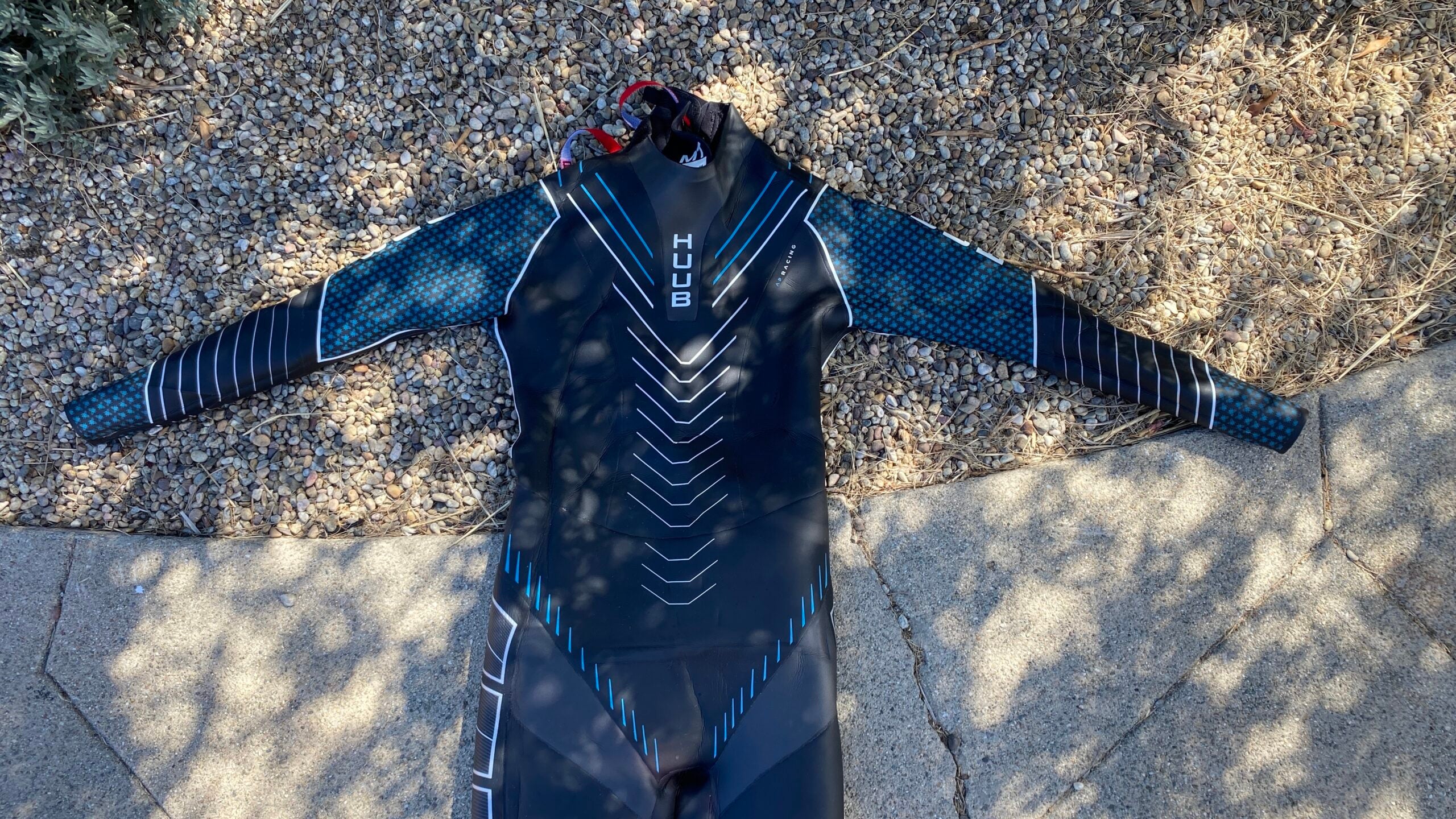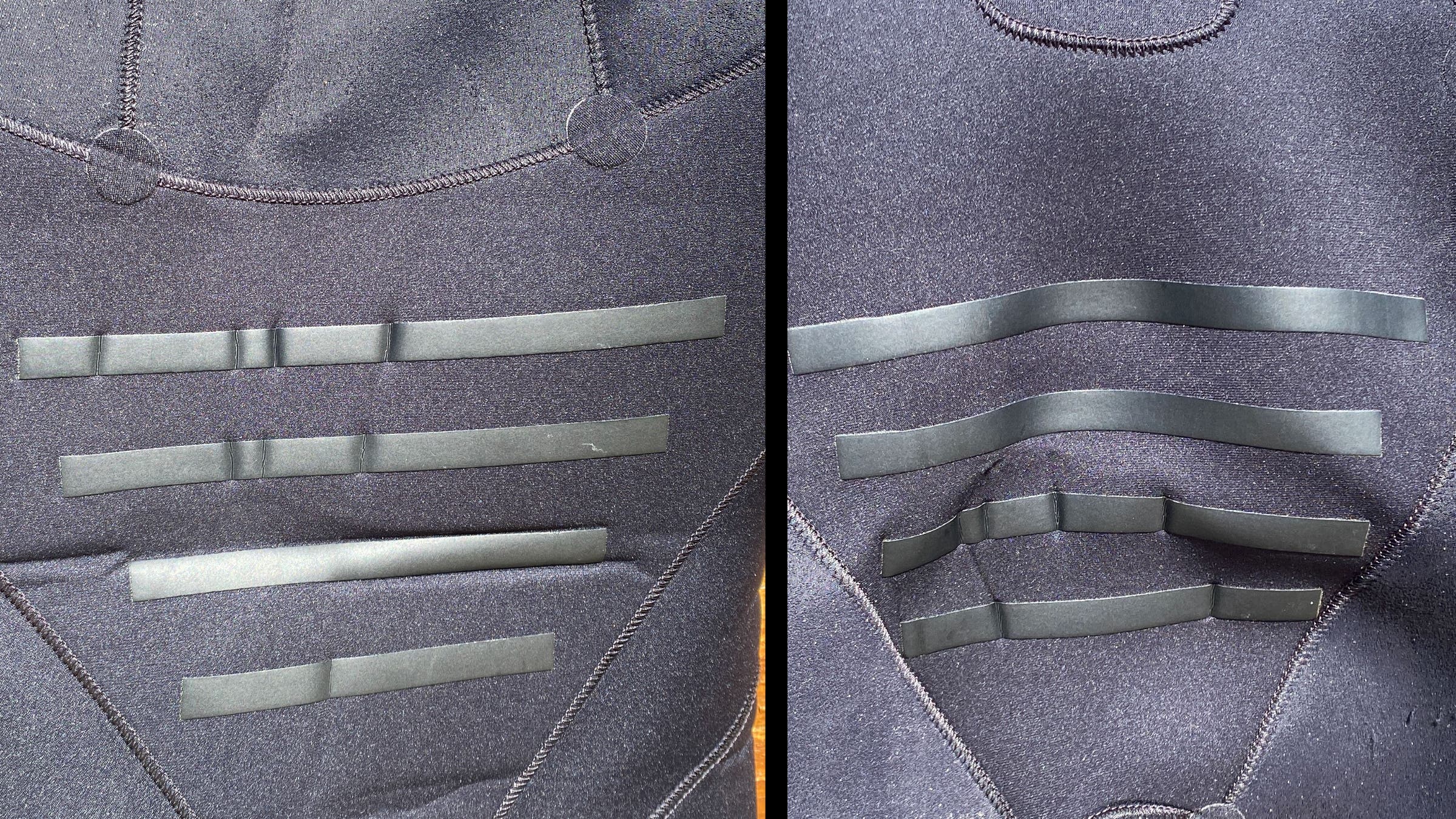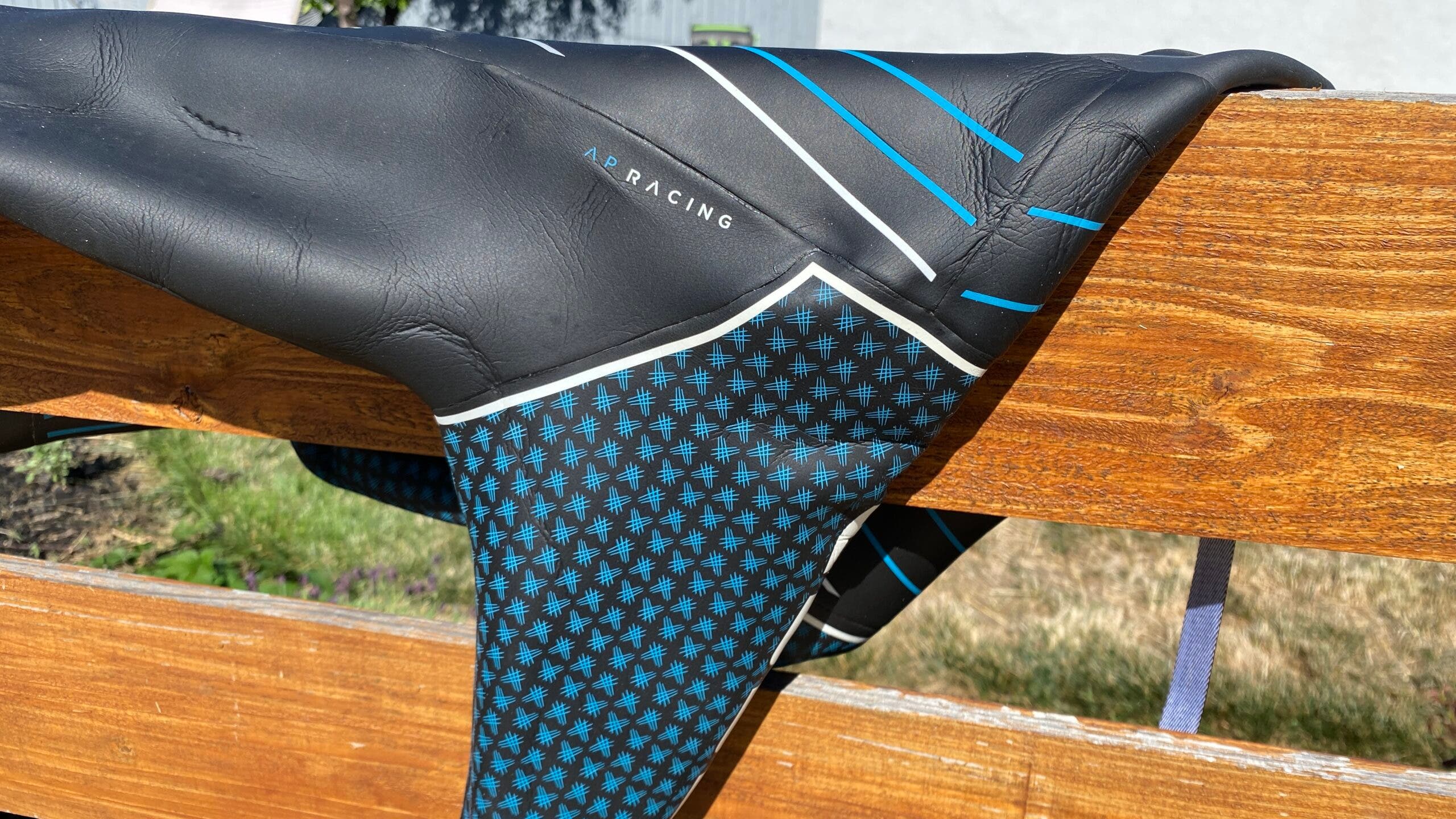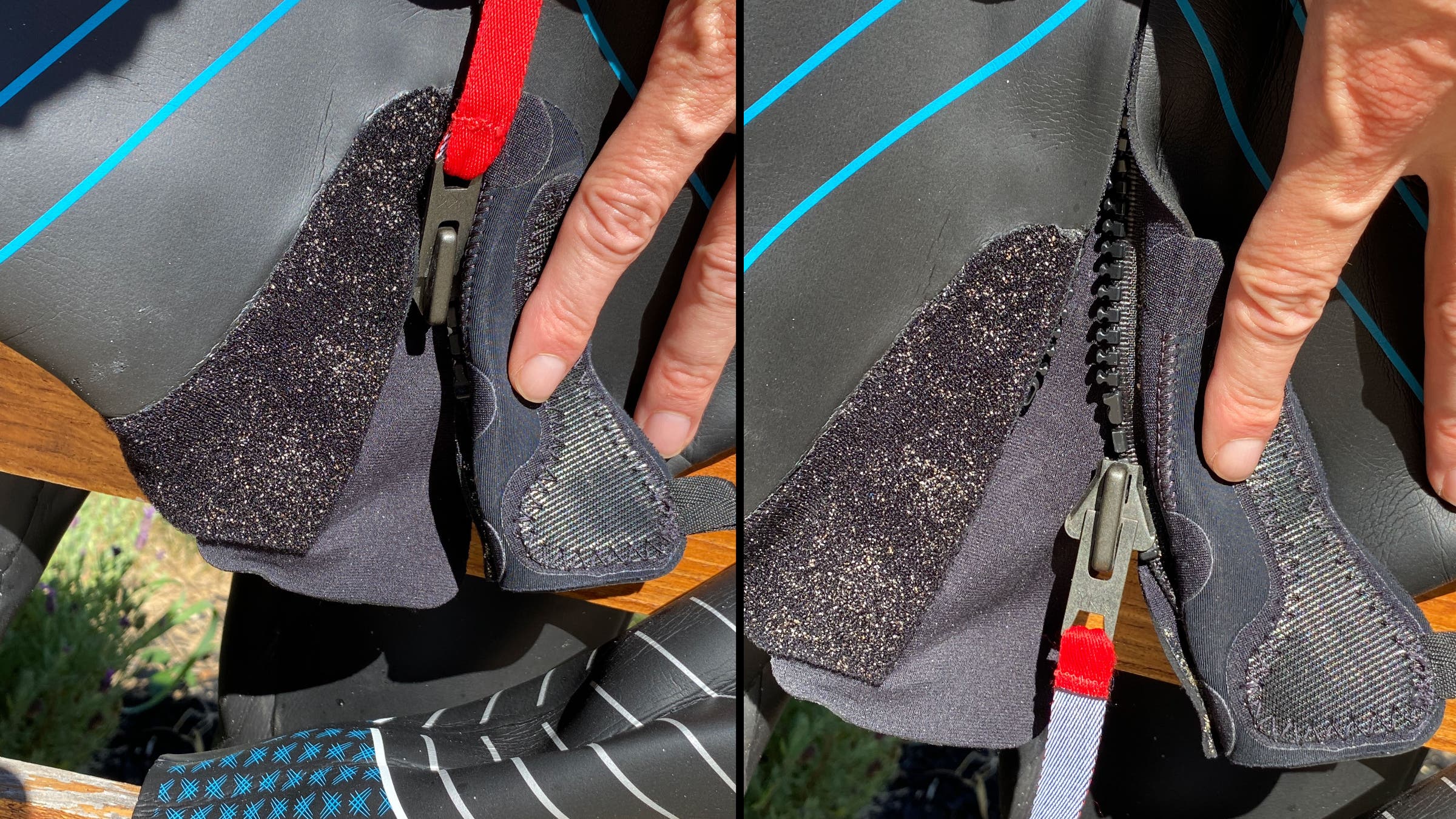Extended Review: Huub Pinnacle Wetsuit

Table of Contents
While Huub isn’t a brand-new name in the triathlon wetsuit scene, it’s safe to say the British company has laid dormant in the U.S. market for the last few years. Though their line has been mostly successful in the U.K.—thanks mostly to the success of its poster brothers Jonny and Alistair Brownlee—it’s been tough, and in some instances downright impossible to find a Huub wetsuit in the U.S.
While we won’t get into the details on the whys and whos of U.S. distribution for Huub, the good news for fans of the highly technically and envelope-pushing brand is that Huub USA is back, and it’s personally in the very capable hands of a man who knows a thing or two about tri swimming, Andy Potts. His first big contribution to the brand? A new, weird wetsuit called the Pinnacle.
Huub Pinnacle: The Basics
Since I’ve already got your attention with claims of a weird new wetsuit, let’s slowly back it up first and look at what’s not-so-weird about this suit. Huub got my own attention about three years ago with the release of its Brownlee Agilis suit—a suit that made it to the top of my pile more often than others because of its ultra floaty legs. The thighs on this suit were so buoyant that it felt like you were wearing a pull buoy (a good thing for those of us with trunk-like legs that typically sink more than they float). Yes, the Agilis was extreme, but if lower-half buoyancy was what your swim stroke craved, then there was literally no better wetsuit for this.
Also like the Agilis, the Pinnacle does the basics well: The Pinnacle uses what Huub nebulously calls an “Arms Neutral design.” While it’s fairly unclear—despite some research—exactly what this means, Huub says it reduces maximum stretch by 50%. What is clear, is that the arms are thin throughout the shoulders and very flexible in the water while swimming. There are also a crazy amount of neoprene panels in this suit that help give it a tailored fit and targeted buoyancy—though it’s not as obscenely buoyant as the Agilis. The Pinnacle also has a breakaway zipper, much like the old Quintana Roo wetsuits used to have. We’ll get into that more below.

But the big big basic on the Pinnacle is Huub’s new “core control system.” Again, there’s not a ton of info on the feature, but by using horizontal strips on the inside of the suit, down near the core—in combination with extremely not-stretchy neoprene running vertically down from the hip to just under the knee—Huub has created an unusual “structure” that helps with snaking on the lower half of the body. While Huub isn’t the first to use stiff material to create structure—most notably, Roka uses something like KT Tape to create stability across the core in their X series of suits—but it’s the most effective.

Huub Pinnacle: What Works
It’s no surprise that the thing that works best on this suit the the extremely novel “core control” system. In fact, I’m surprised that Huub doesn’t make a bigger deal about it. Though Roka’s X series does an ok job of stabilizing the core as you swim, for those of us who “snake” in the water, the Huub’s system is almost shocking to try for the first time. It’s obvious to see the difference in stiffness from the flexible neoprene through 80% of the suit and how stiff the neoprene is in the roughly two-foot-by-three-inch strip that runs from just above the hips to just below the knees on the outside of the leg. But once you put it on and start swimming—again if you’re a notorious “snaker,” the feeling is almost jarring.
While Roka’s X system does a good job keeping tautness across the upper part of the upper body, it does little to keep the upper legs in line with the hips and core—while the Pinnacle does a great job of both.
We also liked the ease of removal in this suit—between the hit-or-miss practicality of the breakaway zipper (more on that below) and the legs, which were some of the easiest to remove that we tested this year. No doubt both are a result in Potts’ Olympian fingerprints all over this rubber.
Huub Pinnacle: What’s Just Fine
For those of us who struggle mightily with “the curse of the snake”—a body position that snakes along in the water with every stroke, causing a very unhydrodynamic shape as we go—the stuff that comes below is nearly irrelevant, as there’s not much that should detract from getting the Pinnacle if you need to swim straighter in the water (aside from the price, of course). But if snaking in the water isn’t super high on your list, you might find yourself wary of spending over $800 for a suit with ok-but-not-amazing shoulder flexibility, medium durability (which, to be fair, is a common symptom of expensive suits with light and delicate neoprene), and fairly medium floatation—especially when compared to the Agilis, of course. Though none of those factors should put a bullet in the Pinnacle, this suit’s floatation and flexibility are more similar to a $600 suit than a $1,000 one.

Finally, the one thing that was substantially less than fine also isn’t necessarily unique to the Pinnacle, but is present on all of Huub’s suits—the breakaway zipper. In an effort to speed up transition, you begin zipping at the bottom, then run it all the way up—like most wetsuit zippers—however, once near the top, you stop zipping, because if you pull it past a certain point, the entire zipper “breaks” and unzips. Yes, this is a novel way to unzip quickly when you’re running out of the water—simply pull up hard, and the back opens—but it’s also fairly easy to overzip as you’re trying to get ready before your swim. The worst part? if you accidentally “break” the zipper while pulling it up, it’s nearly impossible to reset by yourself, as you have to re-seat the zipper in the bottom. Same goes if you forget (as I did a few times) to seat the zipper in the first place and only realize once you have the suit almost completely on.

Conclusions
As someone who has fought that “snaking” feeling—one that’s fairly common among triathlon swimmers, and that’s very very hard to eliminate—this suit felt like a magic bullet. My swim stroke felt immediately different, and immediately better the minute I put this suit on. As someone who has reviewed lots and lots of wetsuits throughout the years, I was shocked to get such a different sensation while swimming, all for the better. For me, I can safely say I’d swallow the high price tag and funky zipper because there is literally nothing else out there that accomplished what the Pinnacle did for my stroke. That said, if snaking is not an issue for you—say you’re ironically an Andy Potts-level swimmer, for instance—you’ll probably find the sensation basically negligible.
If you’re looking for a super high-end wetsuit in the super-premium category (I place this around $600+), you’re probably looking for something insanely flexible (like the Zoot Wiki Wiki 2.0) or super pliable and soft (like the ARK GOAT) or something really really floaty (like the Roka Maverick MX or the Huub Agilis). While the Pinnacle isn’t necessarily any of these things, it is absolutely the best structured wetsuit I’ve ever tested for those who need support in the core, hips, and legs. For the triathlete who needs support, the Pinnacle is hands-down the best on the market—at any price.
RELATED: The Best Triathlon Wetsuits